#Computability theory
Explore tagged Tumblr posts
Text
Sam glancing through the window: Hey, he's back!
Danny: Crude. What's he doing now?
Sam: He's just standing there. Menacingly.
Tucker: What did you do to this ghost to have it follow you around dude?
Danny: I might have wandered into his Hunt by accident. But he didn't even have up a claim scent!
Sam: What kind of ghost doesn't mark their territory?
Danny: That's what I said. I tried to talk to him about it, but he wouldn't hear me out, even though it was an emergency.
Tucker: What emergency?
Danny: There was a mugging going on. The guy with the gun was getting violent and I think he was about to kill a kid so I stepped in. Now Vengeance won't leave me alone
Sam: Vengeance?
Danny pointing at the figure on the roof across the street: He literally said "I am Vengeance". Whenever he does a lighting strike hits the sky so I'm going to respect it.
Sam opening the window: Hey Vengeance! Get out of here! Yeah, I'm talking to you! You wannabe Goth! Go on, get!
Danny: Sam don't interact with him! Now he's going to follow me around more!
Tucker: He might even go from staring at you from the shadows to like talking to you.
Danny: *sigh* I knew this move was a dumb idea.
Tucker: Hey, how else would we get Wayne Enterprise to fund our computer systems? We're this close to creating the best thing to ever happen to Tech Geeks!
Sam: GO ON GET! GET OUT OF HERE! SHOO SHOO!
Danny: Sam!
#dcxdpdabbles#dc x dp crossover#from a fic i never wrote#The trio are doing a computer startup#Its Bruce's first year as Batman#He is confused by the pretty man who thinks hes a ghost#spirit halloween ship#People dont think Batman is real so this doesn't help Danny theory
2K notes
·
View notes
Text
There Were Always Enshittifiers

I'm on a 20+ city book tour for my new novel PICKS AND SHOVELS. Catch me in DC TONIGHT (Mar 4), and in RICHMOND TOMORROW (Mar 5). More tour dates here. Mail-order signed copies from LA's Diesel Books.

My latest Locus column is "There Were Always Enshittifiers." It's a history of personal computing and networked communications that traces the earliest days of the battle for computers as tools of liberation and computers as tools for surveillance, control and extraction:
https://locusmag.com/2025/03/commentary-cory-doctorow-there-were-always-enshittifiers/
The occasion for this piece is the publication of my latest Martin Hench novel, a standalone book set in the early 1980s called "Picks and Shovels":
https://us.macmillan.com/books/9781250865908/picksandshovels
The MacGuffin of Picks and Shovels is a "weird PC" company called Fidelity Computing, owned by a Mormon bishop, a Catholic priest, and an orthodox rabbi. It sounds like the setup for a joke, but the punchline is deadly serious: Fidelity Computing is a pyramid selling cult that preys on the trust and fellowship of faith groups to sell the dreadful Fidelity 3000 PC and its ghastly peripherals.
You see, Fidelity's products are booby-trapped. It's not merely that they ship with programs whose data-files can't be read by apps on any other system – that's just table stakes. Fidelity's got a whole bag of tricks up its sleeve – for example, it deliberately damages a specific sector on every floppy disk it ships. The drivers for its floppy drive initialize any read or write operation by checking to see if that sector can be read. If it can, the computer refuses to recognize the disk. This lets the Reverend Sirs (as Fidelity's owners style themselves) run a racket where they sell these deliberately damaged floppies at a 500% markup, because regular floppies won't work on the systems they lure their parishioners into buying.
Or take the Fidelity printer: it's just a rebadged Okidata ML-80, the workhorse tractor feed printer that led the market for years. But before Fidelity ships this printer to its customers, they fit it with new tractor feed sprockets whose pins are slightly more widely spaced than the standard 0.5" holes on the paper you can buy in any stationery store. That way, Fidelity can force its customers to buy the custom paper that they exclusively peddle – again, at a massive markup.
Needless to say, printing with these wider sprocket holes causes frequent jams and puts a serious strain on the printer's motors, causing them to burn out at a high rate. That's great news – for Fidelity Computing. It means they get to sell you more overpriced paper so you can reprint the jobs ruined by jams, and they can also sell you their high-priced, exclusive repair services when your printer's motors quit.
Perhaps you're thinking, "OK, but I can just buy a normal Okidata printer and use regular, cheap paper, right?" Sorry, the Reverend Sirs are way ahead of you: they've reversed the pinouts on their printers' serial ports, and a normal printer won't be able to talk to your Fidelity 3000.
If all of this sounds familiar, it's because these are the paleolithic ancestors of today's high-tech lock-in scams, from HP's $10,000/gallon ink to Apple and Google's mobile app stores, which cream a 30% commission off of every dollar collected by an app maker. What's more, these ancient, weird misfeatures have their origins in the true history of computing, which was obsessed with making the elusive, copy-proof floppy disk.
This Quixotic enterprise got started in earnest with Bill Gates' notorious 1976 "open letter to hobbyists" in which the young Gates furiously scolds the community of early computer hackers for its scientific ethic of publishing, sharing and improving the code that they all wrote:
https://en.wikipedia.org/wiki/An_Open_Letter_to_Hobbyists
Gates had recently cloned the BASIC programming language for the popular Altair computer. For Gates, his act of copying was part of the legitimate progress of technology, while the copying of his colleagues, who duplicated Gates' Altair BASIC, was a shameless act of piracy, destined to destroy the nascent computing industry:
As the majority of hobbyists must be aware, most of you steal your software. Hardware must be paid for, but software is something to share. Who cares if the people who worked on it get paid?
Needless to say, Gates didn't offer a royalty to John Kemeny and Thomas Kurtz, the programmers who'd invented BASIC at Dartmouth College in 1963. For Gates – and his intellectual progeny – the formula was simple: "When I copy you, that's progress. When you copy me, that's piracy." Every pirate wants to be an admiral.
For would-be ex-pirate admirals, Gates's ideology was seductive. There was just one fly in the ointment: computers operate by copying. The only way a computer can run a program is to copy it into memory – just as the only way your phone can stream a video is to download it to its RAM ("streaming" is a consensus hallucination – every stream is a download, and it has to be, because the internet is a data-transmission network, not a cunning system of tubes and mirrors that can make a picture appear on your screen without transmitting the file that contains that image).
Gripped by this enshittificatory impulse, the computer industry threw itself headfirst into the project of creating copy-proof data, a project about as practical as making water that's not wet. That weird gimmick where Fidelity floppy disks were deliberately damaged at the factory so the OS could distinguish between its expensive disks and the generic ones you bought at the office supply place? It's a lightly fictionalized version of the copy-protection system deployed by Visicalc, a move that was later publicly repudiated by Visicalc co-founder Dan Bricklin, who lamented that it confounded his efforts to preserve his software on modern systems and recover the millions of data-files that Visicalc users created:
http://www.bricklin.com/robfuture.htm
The copy-protection industry ran on equal parts secrecy and overblown sales claims about its products' efficacy. As a result, much of the story of this doomed effort is lost to history. But back in 2017, a redditor called Vadermeer unearthed a key trove of documents from this era, in a Goodwill Outlet store in Seattle:
https://www.reddit.com/r/VintageApple/comments/5vjsow/found_internal_apple_memos_about_copy_protection/
Vaderrmeer find was a Apple Computer binder from 1979, documenting the company's doomed "Software Security from Apple's Friends and Enemies" (SSAFE) project, an effort to make a copy-proof floppy:
https://archive.org/details/AppleSSAFEProject
The SSAFE files are an incredible read. They consist of Apple's best engineers beavering away for days, cooking up a new copy-proof floppy, which they would then hand over to Apple co-founder and legendary hardware wizard Steve Wozniak. Wozniak would then promptly destroy the copy-protection system, usually in a matter of minutes or hours. Wozniak, of course, got the seed capital for Apple by defeating AT&T's security measures, building a "blue box" that let its user make toll-free calls and peddling it around the dorms at Berkeley:
https://512pixels.net/2018/03/woz-blue-box/
Woz has stated that without blue boxes, there would never have been an Apple. Today, Apple leads the charge to restrict how you use your devices, confining you to using its official app store so it can skim a 30% vig off every dollar you spend, and corralling you into using its expensive repair depots, who love to declare your device dead and force you to buy a new one. Every pirate wants to be an admiral!
https://www.vice.com/en/article/tim-cook-to-investors-people-bought-fewer-new-iphones-because-they-repaired-their-old-ones/
Revisiting the early PC years for Picks and Shovels isn't just an excuse to bust out some PC nostalgiacore set-dressing. Picks and Shovels isn't just a face-paced crime thriller: it's a reflection on the enshittificatory impulses that were present at the birth of the modern tech industry.
But there is a nostalgic streak in Picks and Shovels, of course, represented by the other weird PC company in the tale. Computing Freedom is a scrappy PC startup founded by three women who came up as sales managers for Fidelity, before their pangs of conscience caused them to repent of their sins in luring their co-religionists into the Reverend Sirs' trap.
These women – an orthodox lesbian whose family disowned her, a nun who left her order after discovering the liberation theology movement, and a Mormon woman who has quit the church over its opposition to the Equal Rights Amendment – have set about the wozniackian project of reverse-engineering every piece of Fidelity hardware and software, to make compatible products that set Fidelity's caged victims free.
They're making floppies that work with Fidelity drives, and drives that work with Fidelity's floppies. Printers that work with Fidelity computers, and adapters so Fidelity printers will work with other PCs (as well as resprocketing kits to retrofit those printers for standard paper). They're making file converters that allow Fidelity owners to read their data in Visicalc or Lotus 1-2-3, and vice-versa.
In other words, they're engaged in "adversarial interoperability" – hacking their own fire-exits into the burning building that Fidelity has locked its customers inside of:
https://www.eff.org/deeplinks/2019/10/adversarial-interoperability
This was normal, back then! There were so many cool, interoperable products and services around then, from the Bell and Howell "Black Apple" clones:
https://forum.vcfed.org/index.php?threads%2Fbell-howell-apple-ii.64651%2F
to the amazing copy-protection cracking disks that traveled from hand to hand, so the people who shelled out for expensive software delivered on fragile floppies could make backups against the inevitable day that the disks stopped working:
https://en.wikipedia.org/wiki/Bit_nibbler
Those were wild times, when engineers pitted their wits against one another in the spirit of Steve Wozniack and SSAFE. That era came to a close – but not because someone finally figured out how to make data that you couldn't copy. Rather, it ended because an unholy coalition of entertainment and tech industry lobbyists convinced Congress to pass the Digital Millennium Copyright Act in 1998, which made it a felony to "bypass an access control":
https://www.eff.org/deeplinks/2016/07/section-1201-dmca-cannot-pass-constitutional-scrutiny
That's right: at the first hint of competition, the self-described libertarians who insisted that computers would make governments obsolete went running to the government, demanding a state-backed monopoly that would put their rivals in prison for daring to interfere with their business model. Plus ça change: today, their intellectual descendants are demanding that the US government bail out their "anti-state," "independent" cryptocurrency:
https://www.citationneeded.news/issue-78/
In truth, the politics of tech has always contained a faction of "anti-government" millionaires and billionaires who – more than anything – wanted to wield the power of the state, not abolish it. This was true in the mainframe days, when companies like IBM made billions on cushy defense contracts, and it's true today, when the self-described "Technoking" of Tesla has inserted himself into government in order to steer tens of billions' worth of no-bid contracts to his Beltway Bandit companies:
https://www.reuters.com/world/us/lawmakers-question-musk-influence-over-verizon-faa-contract-2025-02-28/
The American state has always had a cozy relationship with its tech sector, seeing it as a way to project American soft power into every corner of the globe. But Big Tech isn't the only – or the most important – US tech export. Far more important is the invisible web of IP laws that ban reverse-engineering, modding, independent repair, and other activities that defend American tech exports from competitors in its trading partners.
Countries that trade with the US were arm-twisted into enacting laws like the DMCA as a condition of free trade with the USA. These laws were wildly unpopular, and had to be crammed through other countries' legislatures:
https://pluralistic.net/2024/11/15/radical-extremists/#sex-pest
That's why Europeans who are appalled by Musk's Nazi salute have to confine their protests to being loudly angry at him, selling off their Teslas, and shining lights on Tesla factories:
https://www.malaymail.com/news/money/2025/01/24/heil-tesla-activists-protest-with-light-projection-on-germany-plant-after-musks-nazi-salute-video/164398
Musk is so attention-hungry that all this is as apt to please him as anger him. You know what would really hurt Musk? Jailbreaking every Tesla in Europe so that all its subscription features – which represent the highest-margin line-item on Tesla's balance-sheet – could be unlocked by any local mechanic for €25. That would really kick Musk in the dongle.
The only problem is that in 2001, the US Trade Rep got the EU to pass the EU Copyright Directive, whose Article 6 bans that kind of reverse-engineering. The European Parliament passed that law because doing so guaranteed tariff-free access for EU goods exported to US markets.
Enter Trump, promising a 25% tariff on European exports.
The EU could retaliate here by imposing tit-for-tat tariffs on US exports to the EU, which would make everything Europeans buy from America 25% more expensive. This is a very weird way to punish the USA.
On the other hand, not that Trump has announced that the terms of US free trade deals are optional (for the US, at least), there's no reason not to delete Article 6 of the EUCD, and all the other laws that prevent European companies from jailbreaking iPhones and making their own App Stores (minus Apple's 30% commission), as well as ad-blockers for Facebook and Instagram's apps (which would zero out EU revenue for Meta), and, of course, jailbreaking tools for Xboxes, Teslas, and every make and model of every American car, so European companies could offer service, parts, apps, and add-ons for them.
When Jeff Bezos launched Amazon, his war-cry was "your margin is my opportunity." US tech companies have built up insane margins based on the IP provisions required in the free trade treaties it signed with the rest of the world.
It's time to delete those IP provisions and throw open domestic competition that attacks the margins that created the fortunes of oligarchs who sat behind Trump on the inauguration dais. It's time to bring back the indomitable hacker spirit that the Bill Gateses of the world have been trying to extinguish since the days of the "open letter to hobbyists." The tech sector built a 10 foot high wall around its business, then the US government convinced the rest of the world to ban four-metre ladders. Lift the ban, unleash the ladders, free the world!
In the same way that futuristic sf is really about the present, Picks and Shovels, an sf novel set in the 1980s, is really about this moment.
I'm on tour with the book now – if you're reading this today (Mar 4) and you're in DC, come see me tonight with Matt Stoller at 6:30PM at the Cleveland Park Library:
https://www.loyaltybookstores.com/picksnshovels
And if you're in Richmond, VA, come down to Fountain Bookshop and catch me with Lee Vinsel tomorrow (Mar 5) at 7:30PM:
https://fountainbookstore.com/events/1795820250305

If you'd like an essay-formatted version of this post to read or share, here's a link to it on pluralistic.net, my surveillance-free, ad-free, tracker-free blog:
https://pluralistic.net/2025/03/04/object-permanence/#picks-and-shovels
#pluralistic#picks and shovels#history#web theory#marty hench#martin hench#red team blues#locus magazine#drm#letter to computer hobbyists#bill gates#computer lib#science fiction#crime fiction#detective fiction
494 notes
·
View notes
Text
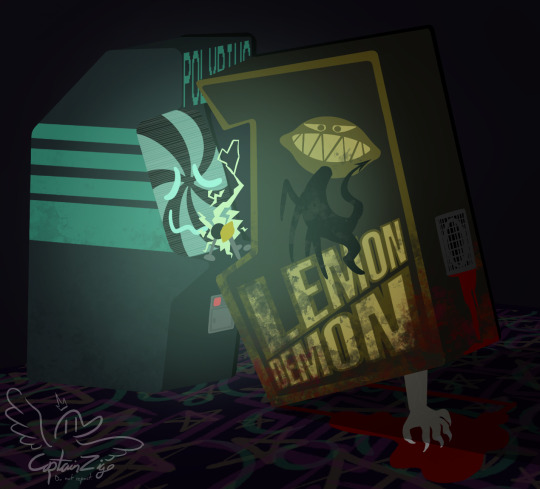
toxic arcade cabinet yaoi
#polybius#lemon demon#cabinet man#toxic yaoi#arcade cabinet#retro tech#arcade#objectum#computer objectum#selfcest#cryptid#conspiracy theories#urban legends#mk ultra#arcadecore#arcade carpet#sinneslöschen#sonneslochen#objectophilia#sci fi art#christmas eve#spirit phone#conspiracy theory#urban legend#creepypasta#niel cicierega#mind control#80s tech#crt#video games
285 notes
·
View notes
Text
In the twentieth century, few would have ever defined a truck driver as a ‘cognitive worker’, an intellectual. In the early twenty-first, however, the application of artificial intelligence (AI) in self-driving vehicles, among other artefacts, has changed the perception of manual skills such as driving, revealing how the most valuable component of work in general has never been just manual, but has always been cognitive and cooperative as well. Thanks to AI research – we must acknowledge it – truck drivers have reached the pantheon of intelligentsia. It is a paradox – a bitter political revelation – that the most zealous development of automation has shown how much ‘intelligence’ is expressed by activities and jobs that are usually deemed manual and unskilled, an aspect that has often been neglected by labour organisation as much as critical theory.
– Matteo Pasquinelli, The Eye of the Master: A Social History of Artificial Intelligence (2023)
#Matteo Pasquinelli#The Eye of the Master#Social History#Social theory#AI#Artificial Intelligence#Science#Scientism#Labour#Capitalism#Marxism#Malaise#Computer Science#Technology#Words#Quote#Writing#Text#Reading#Books#⏳
159 notes
·
View notes
Text
TMAGP Theory: Tria Prima
Spoiler alert/disclaimer: Written after The Magnus Protocol episode 34; also spoilers for The Magnus Archives
I don't know if this idea has been properly explored yet, but I have had a weeklong hyperfixation where I've delved into alchemy and tried to figure out the inner workings of TMAGP universe. This theory is half-boiled at best, and I apologise if I've misunderstood any of the basic concepts. It seems like even alchemists never fully agreed on them, so they're contradicting each other a lot. That being said, let's get into it.
Perspective Reset
First of all, I think we are collectively still too hung up on the Fears as entities or powers. It's very tempting to classify things with the same framework we're familiar with (and conditioned to), but I think it's preventing us from seeing the bigger picture. Prior to the end of TMA, it's possible that no entities ever even existed in this universe, but the incidents have been taking place for a long time. The creators have also explicitly said that they wanted to create a new rule set, and I doubt that they'd build it with the same blocks. Because of this, I set out to find a set of rules that has nothing to do with the fears.
Classical Elements (Very Briefly)
I will oversimplify this for my sanity and yours. We have the four classical elements: fire, air, water and earth. In the classical worldview, these make up everything on Earth. Each element has two corresponding properties, as you can see in the figure below (fire is hot and dry etc). The elements are in a constant process of circulating and flowing, breaking apart and coming together (sand into water, water into stone, stone into wood...), but fire and air are considered more active and volatile while water and earth are more passive and stable. The rest of the universe is filled with the fifth element, quintessence or aether. It is considered heavenly and perfect and completely unchangeable.

The Three Principles (Tria Prima)
Later alchemists made the addition of (first two and then) three principles that work on the elements and in conjunction with them. These principles were used to describe the alchemical process and its parts, but they also had more metaphysical implications. These are the foundation of my theory.
Salt 🜔: Aka. Corpus or The Body. Things that are solid and stable but also corruptible. The dust that's left behind after something is burned. Associated with earth, water and the property of coldness. In humans, associated with the physical body and therefore physical health. Salt is also associated with preservation and sometimes even rebirth. It's what's left behind after the alchemical stage of putrefication, and therefore what undergoes purification.
Mercury ☿: Aka. Spiritus or The Mind. Things that are volatile and soluble. The alchemical solvent or the smoke that rises from a fire. Considered the perfect agent because it demonstrates properties of both a liquid and a solid. The principle of flowing freely between elements and perhaps even heaven and earth. Associated with air, water and the property of wetness. In humans, it's the mind, or the intellect, knowledge and rationality of a person. Some seem to consider it the universal, platonic idea of thought, as mercury wouldn't be restricted by an individual body.
Sulphur 🜍: Aka. Anima or The Soul. Things that combust, but also the principle of combustibility. The flame that manifests when something is burned. Associated with fire, air and the property of hotness. With fire and air being the most active elements, sulphur is also the catalyst for change. In humans, associated with the soul, or the consciousness that links the body to the mind. It's the emotions, ambitions and desires that animate the body.
Why have I given you the symbols? Because they're all there on the OIAR logo:

(I also circled aether because I thought I'd talk about it later but decided not to, so you're free to make your own conclusions)
I currently believe that these three principles are omnipresent in the Magnus Protocol universe. They're just part of the makeup of the universe, causing no one harm. At least, when they're in balance.
The Theory - It's All About Balance
There's been a lot of talk about balance by now.
"The institute, alchemy, all of it. "It’s all about balance. Dua prima, four elements, seven planets, it’s all the same. You’ve got to keep things balanced. And if something is missing, if someone is misplaced, the equation doesn’t balance… and that’s when things get bad…" (Celia, episode 30)
Here Celia mentions dua prima, which (as I alluded to before) is an earlier theory surrounding Sulphur and Mercury. Salt was proposed as the third principle in a later theory, but by now the tria prima seem to be more widely accepted.
"Not that anyone cares as long as it all balances, right? Not too much mercury or the world ends, not too much sulfur or we all go mad…" (Colin, episode 19)
Huh.
So, let me lay out the actual theory.
The principles usually strive for balance, because it's their natural state. However, sometimes the balance is skewed by human action or some other unexpected force. This imbalance can happen on an individual level or it can affect objects (which then become "cursed") or locations (which then become "poisoned"). In fact, the Magnus Institute calls such poisoned locations loci (singular "locus"). I also hypothesise that this is how the OIAR categorises their incidents (1. individuals - 2. locations - 3. objects).
When there is an imbalance, the affected person/area/object starts to display an unnatural amount or lack of one principle. For example, if there's an abundance of salt, we may see people or things slow down, become passive, even crystallise. Bodies preserved despite obvious corrosion, infections that putrefy and then purify flesh into a "perfect" form. The clearest example I can think of would be episode 3, where the character quite literally transmutes into a tree. Or episode 23 where a character inserts a piece of coral under her skin and begins to paralyse as it grows out of her. If you absolutely have to compare to TMA, I'd say a lot of Flesh, Corruption or Buried statements would fit under salt. It is associated with earth, water and literal bodies, after all.
Abundance in mercury would manifest as things getting a little weird, unstable and volatile, but in a subtle, flowy way. Changing architecture, people seeming odd, things dissolving into others, time or dimensions being unstable, perhaps the limits of a human psyche being broken. I'm thinking of the liminal spaces from episode 8 or the pier from episode 33. The fog is an especially fitting link, what with fog being a manifestation of air and water. I also think the entire Hill Top Centre has been affected. And now that I started, you could easily make connections to the Stranger, the Lonely, the Spiral and the Eye. Which brings an ironic twist to Colin's statement. Too much "mercury" already ended the world once.
Abundance of sulphur would bring out more abrupt changes, it would twist people's passions into unhealthy obsessions, drive people to anger and senseless bloodlust, give consciousness to the unconscious and animate the inanimate. In fact, in episode 19, the character says of Newton's dog: "such a creature must by all natural law lack that essential and ephemeral anima." Another case of an unexpectedly conscious thing would be Liverpool (episode 32), who is coincidentally also incredibly angry. I also think Ink5oul's tattoos have an element of sulphur, not only because their first stolen design (sun with a dot in the middle) evokes the alchemical symbol for sun. In TMA sulphur would probably be attributed to the Slaughter, the Hunt, the Desolation or the like.
I have noticed that a lot of TMAGP incidents involve an unhealthy desire, passion, obsession or (literal and metaphorical) hunger. It's also noticeable that the symbol for sulphur appears on the OIAR logo four times (once in each corner of the square representing the elements). I don't know if this is a stylistic choice or if it has deeper implications. But it's there. And as Colin implies, it could be bad.
The beautiful part about this framework is that it doesn't set any clear limits between the categories, because the balance can be disrupted in many ways. Lack of salt means abundance of sulphur and mercury, and their distribution may also vary greatly. I also don't know if the OIAR ranks their incidents in these terms. They probably have some needlessly complicated system that's practically undecipherable. (I took a long time trying to figure out the DPHW and I'm no closer to solving it.)
End note
I have some thoughts about what the goals of the OIAR and the Magnus Institute are based on this theory, but this post is too long now. May make a follow-up eventually. Or procrastinate until they just tell us.
Edit: I have now written my theory posts on the OIAR and the Magnus Institute. Go read if you're so inclined.
#the magnus protocol#tmagp#tmagp podcast#tmagp spoilers#tmagp theory#tmagp tria prima theory#the magnus archives#tma spoilers#tma#tma podcast#fear entities#red string theory#magnussing#help this hyperfixation has consumed me#i need sleep#before my computer eats me
77 notes
·
View notes
Text
Today I re-listened to the first episode of TMAGP and the part surrounding the reddit thread about the magnus archives caught my eye (pun intended)


I dont think the archivst creature is John. I think the reddit user RedCanary was turned into the archivist that we see later in the season
#the magnus protocol#the magnus protocol spoilers#tmagp#magpod#rusty quill#johnathan sims#id be so happy if he truly was just in the computer#also if someone else has mentioned this forgive me#tmagp theory#tmagp thoughts#the nerd rants
62 notes
·
View notes
Text
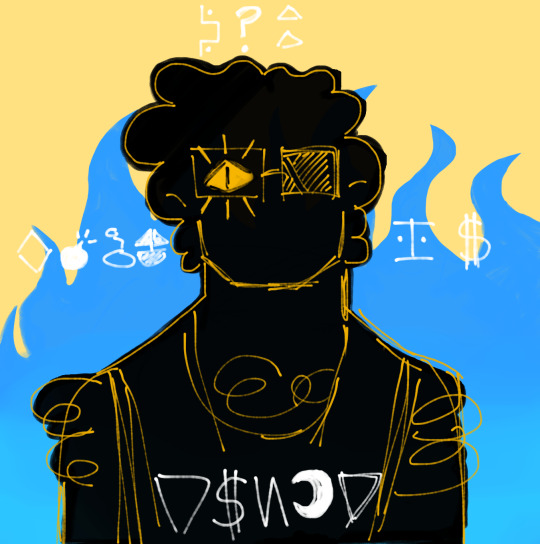
we’ll start at the end
until we begin.
#gravity falls#gravity falls fanart#my fanart#stanley pines#(or is he....????👀)#same coin theory#STILL OBSESSED OVER SAME COIN. GOD.#the caption comes from what appears on the website computer after you type in “baaaa / say baaaa”#which kind of gave off same coin theory to me???? (or maybe i’m just severely brain rotted about it)#this is kind of a better ver. of the drawing i made in november lmao#edit: fixed the code on the bottom :))
108 notes
·
View notes
Note
im sure Eklutna will be okay. she will be so okay she will immediately take her newborns to the Crude Oil Moonpool and baptise them like god intended.
better yet, she will insist on giving birth by the pool, since its the closest way of interacting with StarClan. and they will help her. surely it will end well.
(pls dont let your cats give birth and dip their infants in crude oil.)
You're so right. Eklutna CAN'T die. She has PLANS.

If she dies who's gonna put her kids in the world's most dangerous dunk tank??? Also, yes, she HAS visited the Black Water Pool for a blessing, and yes, the healers were pissed, but they just don't understand. They don't understand that she is Starclan's special little girl.
(P.S. thank you for including your own disclaimer. Wonderful.)

Yes. Eklutna. All the time. She was one of the cats who first discovered it, then after getting into a fight with the rest of Ghostclan over whether or not they should tell the other clans about the Black Water Pool she limped her bleeding ass there to give herself a blessing before she continued up the mountain to Loudclan. Now she's taken a dip while pregnant to get Starclan to bless her unborn kits, which is a BIG taboo. But what are the healers to do? How do you punish someone for participating too enthusiastically in your state sponsored religion? She's not the only one to ever do it, of course, she's just kinda the most egregious about it.

-- Eklutna, 2024

*:・゚✧*:・゚✧Drama✧・゚: *✧・゚:*
#loudclanasks#loudclan#ocs#clan generator#clangen#warrior cats#warriors oc#EklutnaLC#bonus art#call me the clown for doing a complex pose then completely hiding it in shadow and oil#she's meant to be grooming herself but it did not translate well with the way my laptop screen nukes the colors.#oh well. we live and we learn.#if you're looking at this on a computer just know the colors are not coloring. i'm better at color theory than this makes me look i swear
241 notes
·
View notes
Text
Pokemon theory time
So Porygon, right? For the longest time I found it weird that it was Normal type instead of Electric, despite being made of computer code.
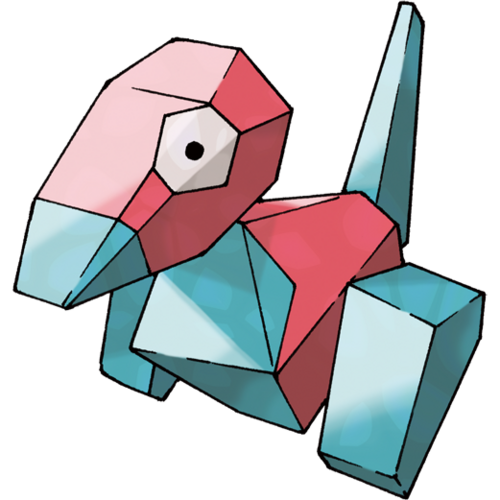
But the thought occurred to me: when any Pokemon gets stored in the PC, they must get converted to code from their Pokeballs, right? That doesn't make them Electric type, all Pokemon can be stored that way.
So my theory is: What if Porygon was used as a prototype to test the concept of the Pokemon Storage System?
(yes, this would mean that Bill would have worked on Porygon)
Creating Porygon would make sense as a way to test if converting a Pokemon into data was possible, and it wouldn't require testing on any existing Pokemon.
Hence the Normal typing: if Porygon was created to be an example of a "generic" Pokemon, Normal would be the most logical option for its creators to pick.
This could also explain the Porygon line's signature moves, Conversion and Conversion 2, which allow Porygon and its evolutions to change into any type. The PSS would likely have needed a way to make sure it could preserve a Pokemon's type, so having Porygon contain data to test all of them makes sense.
315 notes
·
View notes
Text

[237] Very vaguely reminiscent of an owl and somewhat absolutely horrifying
#237#xisuma#xisumavoid#daily xisuma#hermitcraft#meant to doodle something about the fact that I am just casually COMPOSING ? MUSIC ? for my MUSIC THEORY CLASS ?#music theory isn't REAL#there's no way I sit down and music comes out of computer
56 notes
·
View notes
Text
born to code, forced to learn theory 💔💔💔

#codeblr#programmer#programming#comp sci#i yearn to code#coding#csblr#computing#computer science#computer#python#theory#stem student#student life#study motivation#studyblr#studying#studyspo#student#study blog#stemblr#women in stem#stem#stem academia#academics#science
101 notes
·
View notes
Text

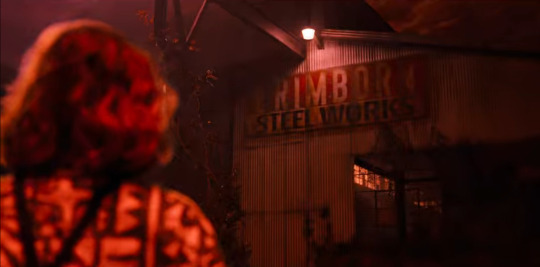
This is the source El finds in the void and it's twofold. It's the father. In this case it's Neil but he's just a stand-in for Lonnie.
The other source is the Steel Works warehouse BRIMBORN but that's not how it is presented to us throughout season 3.

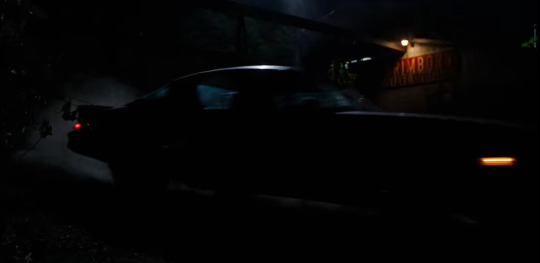
It reads more like BRIMBORN as a shadow covers up the B pretty consistently, making us unable to read it
Warning for discussions of CSA under the cut

We also get the full address of the steelworks warehouse and it's
Brimborn Steelworks 6522 Cherry Oak Drive
This is how where the MF possessed Billy. Cherry Oak Drive
Lonnie also means oak tree
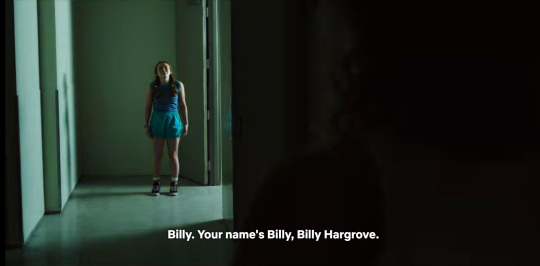

Max also tells us Billys full address
Billy Hargrove 4819 Cherry Lane
Billy lives on Cherry Lane but he lost himself and got possessed by the father at Cherry Oak Drive. A lane to drive on...

Source
Billy was a Cherry Lane at first until he got corrupted in the Cheery Oak Drive
Billy is short for William and a stand-in for Will
We also learn more about cherries and their availability



Hopper says there is no cherry in the 7-Eleven. Apparently they had only strawberry

That's not entirely true tough as we see with Alexei here. In fact it seems like they have only cherry and cola. But Hopper still drove there even though it was way out of his way. So I'm sure he would have gotten cherry if it were there, right?
Well, maybe it's more like an either/or situation with the Seven and the Eleven in which one number is the cherry and the other is the strawberry . Maybe they are mutually exclusive
As we've already seen though, it's Will who is already associated with cherries via association of Billy which in turn can only mean one thing

Eleven is the strawberry
But



In the end there is no difference. Cherry and strawberry taste the same. They are the same. Just sugar on ice
But what's a strawberry anyway?

Source
First of all of this goes with the Will Byers has DID theory.
For the longest time I was convinced that Will created Eleven on the day he vanished in the woods but I don't think that's what has happened any longer. I think she was there long before. Ready to take over whenever Will needed her to use her superpowers to absorb what he couldn't face.
That's why Eleven is a strawberry. She was there ready to save Will whenever Lonnie sold off his son to buy dr*gs. It's why there is still a cola next the cherry in the 7-Eleven. Coca-Cola or just coke. Other sources also say that a Strawberry is a woman who willingly sells se*ual favors to buy dr*gs. (although willingly is hardly the word I would use here)
In the beginning of the first season El could barely speak and was more like a child who didn't understand anything. This was also done for her protection throughout the years I think. The less she understood what happened, the better it is for her (or so the reasoning goes)
But she still understood the most important part

#cw csa#stranger things#stranger things theory#will byers#el hopper#lonnie byers#eleven#my meta#if you google the postal code of the steelworks address#you'll find a computer chip that was commonly used in the 80s#which also had a bug#but i understand too little of these things to make any sense of it#so i'm leaving it out here#i still don't know what the ice part is all about#i know he likes it cold but why?#why are are both will and el associated with ice?#but honestly thinking about all of what has happened to will and el#just makes me sad
56 notes
·
View notes
Text
Self-referencing functions
Hey mathblr, let me tell you about one of our favorite foundational systems for mathematics! It's designed to allow for unlimited self-reference, which is neat since self-reference is usually thought of as a big no-no in foundational systems. It turns out that it actually doesn't matter at all, because the power of self-reference is completely exhausted by the partial computable functions. The theory ends up being equivalent to Peano Arithmetic.
What are the axioms?
The theory is two-typed: the first type is for the natural numbers, and the second type is for functions between numbers. For convenience, numbers will be represented by lowercase variables, and uppercase variables represent functions. To prevent logical contradictions, we permit that some functions will fail to evaluate, so we include a non-number object ☒ called "null" for such cases. The axioms about numbers are basically what you'd expect, and we only need one axiom about functions.
The < relation is a strict total order between numbers.
Each nonempty class has a minimum: axiomatize the "min" operator with φ(n) ⇒ ∃m,(φ(m) ∧ min{k:φ(k)}=m≤n) for each predicate φ, and relatedly min{k:φ(k)}=☒ ⇔ ∀n, ¬φ(n).
Numbers exist: ∃n,n=n
There's no largest number: ∀n,∃k,n
There's no infinite number: ∀n,n=0 ∨ ∃k,n=S(k)
Every functional expression represents a function object that exists: ∃F, ∀(a,b,c), F(a,b,c)=Ψ for any function term Ψ. The term Ψ may mention F.
To clarify the fifth axiom, we define 0:=min{n : n=n}, and relatedly S(k):=min{n : k<n} is the successor function. The sixth axiom allows us to construct self-referencing functions using any "function term". Basically, a term is any expression which evaluates numerically. Formally, a "function term" is any well-formed formula generated from the following formation rules.
"n" is a term; any number variable.
"F(Θ,Φ,Ψ)" is a term, whenever Θ,Φ,Ψ are terms.
"Φ<Ψ" is a term, whenever Φ,Ψ are terms.
"min{n : Ψ}" is a term, whenever Ψ is a term.
In the third rule, we seem to be using the boolean relation < as if it were a numerical operator. To clarify this, we use the programmer convention that true=1 and false=0, hence (n<k)=1 whenever n<k is true, and otherwise it's zero. Similarly in the fourth rule, when we use the numerical function term Ψ as the argument to the "min" operator, we interpret Ψ as being false whenever it's 0, and true whenever it's positive. Formally, we can use the following definitions.
(n<k) = min{b : k=0 ∨ ((n<k ⇔ b=1) ∧ n≠☒≠k)} min{n : Ψ(n)} = min{n : 0<Ψ(n) ∧ ∀(k<n),Ψ(k)=0}
Okay, what can it do?
The formation rules on functions actually gives us a TON of versatility. For example, the "<" relation can be used to encode literally all boolean logic. Here's how you might do that.
¬x = (x<1) (x≤y) = ¬(y<x) x⇒y = (¬¬x ≤ ¬¬y) x∨y = (¬x ⇒ y) x∧y = ¬(¬x ∨ ¬y) (x=y) = ((x≤y)∧(y≤x)) [p?x:y] = min{z : (p∧(z=x))∨(¬p∧(z=y))}
That last one is the ternary conditional operator, which can be used to implement casewise definitions. If you wanna get really creative, you can implement bounded quantification as an operator, which can then be used to define the supremum/maximum operator!
∃[t<x, F(t)] = (min{t : t=x ∨ ¬F(t)}<x) ∀[t<x, F(t)] = ¬∃[t<x, ¬F(t)] sup{F(t) : t<x} = min{y : ∀[t<x, F(t)≤y]}
Of course, none of this is even taking advantage of the self-reference that our rules permit. For example, we could implement addition and multiplication using their recursive definitions, provided we define the predecessor operation first. Alternatively, we can use the supremum operator as a little shortcut.
x+y = [y ? sup{succ(x+t) : t<y} : x] x*y = sup{(x*t)+x : t<x} x^y = [y ? sup{(x^t)*x : t<y} : 1]
Using the axioms we established, basically as a simple induction, it can be proved that these operations are total and obey their ordinary recursive definitions. So, our theory is at least as strong as Peano Arithmetic. It's not hard to believe that our functions can represent any partial computable function, and it's only a little harder to prove it formally. Conversely, all our axioms are true when restricted to the domain of partial computable functions, so it's consistent that all our functions are computable. In particular, there's a straightforward way to interpret each function term as a computer program. Since PA can quantify over computable functions, our theory is exactly as strong as PA. In fact, it's basically just a definitorial extension of PA. Pretty neat, right?
Set theory jumpscare
Hey didn't you think it was weird how we never asserted the axiom of induction? We asserted wellfoundedness with the minimization operator, which is basically equivalent, but we also had to deny infinite numbers for induction to work. What if we didn't do that? What if we did the opposite? Axiom of finity unfriended, our domain of discourse is now the ordinal numbers. New axioms just dropped.
There's an infinite number: ∃w, 0≠w ∧ ∀k, S(k)≠w
Supremums: (∀(x≤a),∃y,φ(x,y)) ⇒ ∃b,∀(x≤a),∃(y≤b),φ(x,y)
Unlimited Cardinals: ∀a, ∃b, #(a)<#(b), where #(n) denotes the cardinality operation.
Each of the above axioms basically just assert the existence of larger and larger ordinal numbers, continuing the pattern set out by the third and fourth axioms from before. Similar to how the previous theory could represent all computable functions, this theory can represent all the ordinal recursive functions. These are the functions which are representable using an Ordinal Turing Machine (OTM). Conversely, it's consistent that all functions are ordinal recursive, since each function term can be interpreted as a program that's executable by an OTM. Moreover, just like how the previous theory was exactly as strong as PA, this theory is exactly as strong as ZFC.
It takes a lot of work to interpret ZFC, but basically, a set can be represented by its wellfounded and extensional membership graph. The membership graphs can, in turn, be encoded by our ordinal recursive functions. Using the Supremums axiom, it can be shown that the resulting universe of sets obeys a version of the Axiom of Replacement, which can be used to prove the Reflection Theorems, ultimately leading to the Specification Axiom. By adapting similar techniques relative to some regular cardinal, it can then be shown that every set admits a powerset. Lastly, since our functions are basically generated from infinitary computer code, they can be encoded by finite strings having ordinal numbers as symbols. Those finite strings are wellorderable, which induces a global choice function, proving the Axiom of Choice. Excluding a few loose ends, this covers all the ZFC axioms, giving the desired interpretation.
In the finitistic version of this theory, we made the observation that the theory was basically just a definitorial expansion of PA. In the infinitary case however, we unfortunately cannot say the same about ZFC. This ultimately comes down to the fact that our theory provides explicit and definable choice functions, meanwhile ZFC cannot. Although ZFC guarantees that choice functions exist, it cannot prove the existence of a definable choice function. This is because ZFC is an inferior theory has no clue where its sets come from, or what they really look like. Our theory, built from unlimited self-reference, and interpreted under the banner of ordinal recursive functions, is instead equivalent to the theory ZFC+"V=L".
38 notes
·
View notes
Note
okay OP, in your recent art you mentioned that "you will explain if needed" and gave a detailed explanation of what might have happened (to Charlie and Maxwell).
I'd LOVE to hear more of your thoughts, and the "explanation" that you said you'd provide (ノ◕ヮ◕)ノ*.✧
ps i really like your art.
Oh! Hello there! 👀
And yes indeed I did. Alright then, get ready for the brainrot. xD
For a long time I've thought that Charlie died and came back wrong, and in the recent updates there have been several things hinting at it.
Here is a list of the ones I can remember right now:
Maxwell says ”There's a story behind that...” when inspecting a touch stone.

After the recent update, the ”dark side” Winona can sense traces of Charlie on the touch stone, confirming it's related to her (the quotes vary).
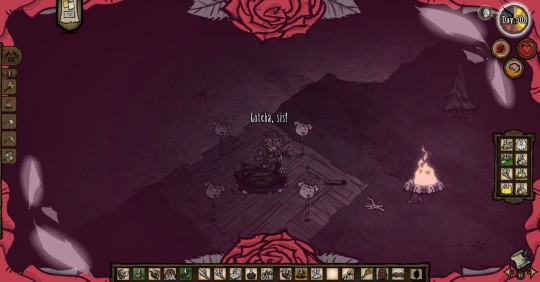
In the Encore animated short, there is a brief flashback of Charlie with the Ancient Fuelweaver behind her, and then her Chess piece is seen falling and sinking inside a black square on the board - some heavy symbolism there, sparing us from the gory details, I guess...


In Charlie's stageplay, the doll that represents her breaks, but she's brought back to life by the Mirror (Them?) - alive but different, as she says.
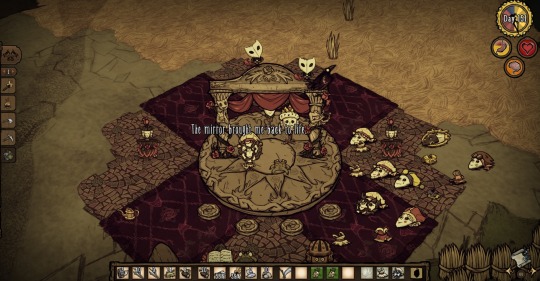
And then there are things that fall more into the headcanon territory, until more evidence comes up that either proves or debunks those ideas entirely, but I'll explain those as well, since they heavily influece my art inspiration.
I subscribe to the idea that the two characters in the ancient murals represent Maxwell and Charlie themselves in their early years in the Constant (but depicted by the locals that were unfamiliar with human anatomy). Time moves differently in that world so it could have been thousands of years ago, but the two made contact with the locals and briefly improved their life through the use of Their magic – until it backfired and the entity that must have been sealed for a reason broke free. Assuming the character with the torch really is Charlie, she died protecting Maxwell from the consequences of his own mistakes. In the final mural image, only her cracked head can be seen.
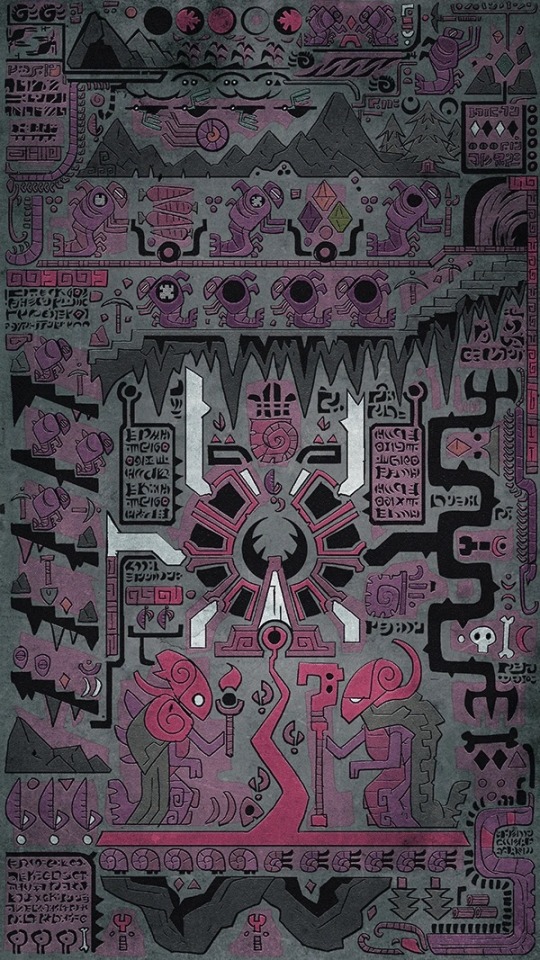



Another headcanon I have comes from the fact that one of shadow Charlie's arms seems to be entirely made of shadows (curiously, there are also arm bones attached to the touch stone, although they could have belonged to a pigman too, like the heads), so I think that whatever happened to her basically shattered her to pieces, and some pieces may still be missing - like that arm. But details like this are only a headcanon for now.

This also falls in the time period between 1906 and 1910-ish, when apparently some crazy stuff happened that Klei hasn't showed us much about – yet (according to their own post some years ago). ^^
So based on all this, my idea is that Maxwell summoned the Fuelweaver (as seen in the murals), but he messed up big time and Charlie got caught in the crossfire trying to protect Maxwell. She died a gruesome death (that may have torn her to pieces even more brutally than in my drawing). Maxwell in his desperation made the touch stone in a hurry (which is why it looks so rough compared to all his other constructs), carried what was left of Charlie there, and made a deal with Them to bring Charlie back to life no matter the cost. And they did. They just didn't bring her back exactly like she used to be, and she would probably fall to pieces and die instantly if she was separated from the entity that she now shares the body with...
I think Maxwell had been able to move freely in the Constant (maybe even out of it, based on his disappearances earlier) until then, but deals like that come with a price, so he lost his freedom and became Their tool (sold his soul to save Charlie?). Or something like that anyway.
There are also the parallels between Charlie and Abigail with their connection to their special flowers, as highlighted in the newest animated video. Charlie just might be another ghost inside a flower herself, but thanks to Them, she got to keep her body, or at least a form that resembles her body.. But I prefer to think that her actual broken body is still a part of the deal, as messed up as that is. We already know that They can keep a body that should have died a long time ago alive for an eternity, thanks to Maxwell. When he was released from the Nightmare Throne and time caught up to him, he didn't just die, he turned to a skeleton that crumbled to dust in an instant..! That's some old corpse, but he'd been conscious all that time because They wouldn't let him die.
So yeah, these happy thoughts inspired that piece. I might draw more about that if I still feel like it later. :D
#reply#3447#thanks for asking#I hope you won't regret it#ask#don't starve#maxwell#charlie#theory#theories#don't starve together#JeMiChi talking#I'm so glad I've got all these screenshots saved on my computer
107 notes
·
View notes
Text
I would like to thank @just-a-fun for their recent post about Darius that motivated me to write a whole angst lore thing ....again.
I really do think that it's a possibility we will get to see a wider perspective of Darius emotions in season 3 because of everything that happened in season 2 especially finding out the women who he had fallen in love with and thought that he was the reason shes "dead" is alive.
In season one we get to see some emotions of grief mostly depression but also we see how Darius keeps pushing his emotions down trying to focus on the whole who's trying to attack us mission. Darius is seen taking lots of deep breaths during specific scenes mostly when him and Ben are disagreeing on something or arguing. Sure it may look like hes trying to be the bigger person and calming down the argument which he is. But there is also a look in his eyes for a split second before he take his breath as if hes trying to hold back his emotions from expressing how he truly feels. Once we get to Kenjis episode Darius is actually showing some emotions that looked like he was holding back like anger and not the same type of anger when he and Ben were arguing about the raptors or theories but mostly when its's about Brooklyn its slightly visible. throughout the episodes we see him show more and more emotions exactly like in season one of CC when the Indominos attacked and he focused on pushing his emotions downs and then in the final ep where they're under ground Darius just burst out. Its show cased in majority of the seasons except in season 4 where hes mostly gone back to his season one self where he doesn't really talk that much. I noticed in season 2 of CC hes trying to be more optimistic and socialize with Mitch and the others exactly how he was trying to do with Zenya in season 2 of CT.
With season 3 of CC we see him display a lot of emotions and in season 5 and in both seasons we actually see him try to push his emotions out. S3 with Ben and S5 with Kenji and then he had busted out on them he fought with Ben and yelled at Kenji so in S3 of CT we can predict that his emotions will be mainly focused on Ben and Brooklyn . And that a main emotion will definitely be anger and betrayal but he will try not to show because he already knows everyone else is going thorough the same wants to make sure they're safe he doesn't focus on his emotions which will defiantly cause him to lash out later on in the season. like in S2 of CT when everyone found out Ben knew we saw the look on Darius face where he was hurt and wanted to ask Ben questions too but realized he shouldn't be focused on that and try to get everyone to focused on finding Brooklyn so they can bring her back.
#I ditched my math hw for this because idk how to do one question so I gave up entirely#also my school computer said F you and that it'll block goggle so now I can't do my AP US project#jwcc#chaos theory#jurassic world camp cretaceous#jwct#jurassic world chaos theory#camp cretaceous#ben pincus#darius bowman#kenji kon#yasmina fadoula#sammy gutierrez#jwcc brooklynn#brooklyn chaos theory#Darius theroy#Darius theories#jwcc Darius bowman#jwct Darius bowman
41 notes
·
View notes
Text

in my heart post-nublar brooklynn will always have a pixie cut but it's fun to play with other hairstyles sometimes 💇♀️
#i titled this one “manic pixie dream girl brook” on my computer but we can just call this the Elevated Bun#brooklynn jwcc#jwcc brooklynn#jurassic world camp cretaceous#camp cretaceous#jwcc#mango art#brooklynn#mango's who-knows-how-many-days til chaos theory
289 notes
·
View notes